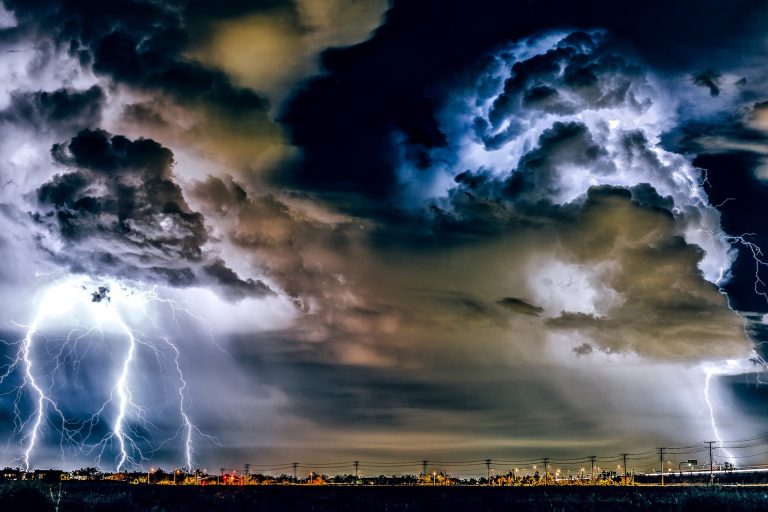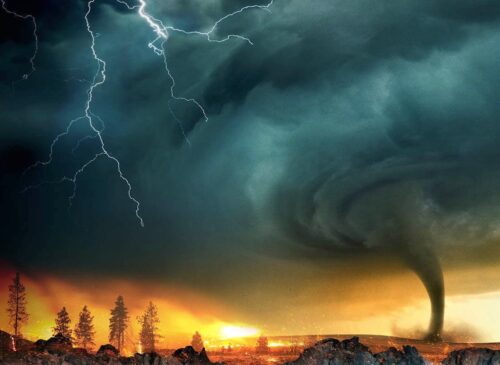

For decades, debate over the rise in natural disasters caused by greenhouse gas (GHG) emissions has been a cornerstone of the climate crisis narrative. [emphasis, links added]
However, a thorough examination of data from sources such as the Emergency Events Database (EM-DAT) of natural disasters reported globally from 1970 to 2024 reveals a more nuanced reality.
Upon closer inspection, the suggestion that rising greenhouse gas emissions are leading to an increase in natural disasters appears increasingly untenable, if not outright wrong.
There has been no significant increase in natural disasters since 2000
As shown below, EM-DAT data show a significant increase in the number of reported natural disasters from the 1970s to around 1999.
After this, however, the trend stabilizes, with no significant increase in the frequency of natural disasters until 2024.
This is crucial because it contradicts the mainstream narrative that directly links the rise in natural disasters to rising greenhouse gas concentrations.
Carbon dioxide emissions have increased dramatically since 2000, driven largely by industrial growth in emerging economies such as China and India.
In fact, more carbon dioxide has been emitted into the atmosphere in the past two decades than at any other time in human history.
According to the climate crisis narrative, this should lead to a corresponding increase in extreme weather events and natural disasters. However, the data clearly shows this is not the case.
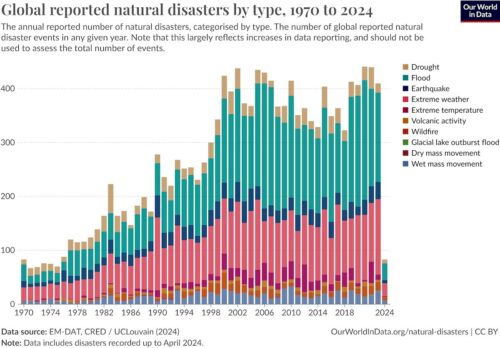

Historical background and data quality before 2000
It is crucial to acknowledge this The significant increase in natural disaster reporting from the 1970s to 1998 largely reflects improvements in data collection and reporting.
The EM-DAT website itself acknowledges the problem:


This admission is significant because it undermines claims that natural disasters increased at an unprecedented rate before the year 2000.
The increase in reported disasters is largely attributable to better monitoring, more comprehensive data collection, and improved communications systems, rather than an actual increase in the frequency of such events.
Essentially, the data before 2000 are less complete, and The increasing number of reported disasters in the second half of the 20th century can be attributed to improvements in record-keeping rather than a surge in actual events.
After the turn of the century, global reporting mechanisms matured and the number of reported disasters stabilized, further emphasizing Any previous upward trend was the result of reporting, not reality.
The role of carbon dioxide: reducing greenhouse gas emissions and eliminating disasters
The most glaring contradiction in the climate crisis narrative is Although carbon dioxide emissions have increased significantly since 1998, there has been no corresponding increase in natural disasters.
This fact alone disproves the argument that carbon dioxide is a major driver of extreme weather events and disasters.
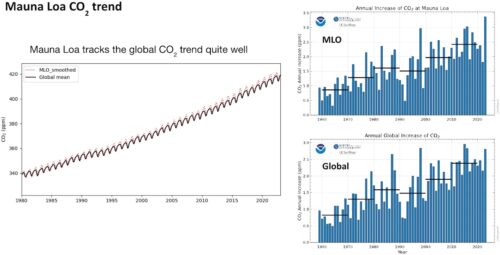

If carbon dioxide is the leading cause of natural disasters, as climate alarmists often claim, We expect the number of disasters to have increased dramatically over the past two decades, along with a sharp increase in global carbon dioxide concentrations. However, the data do not support this hypothesis.
Instead, the number of reported disasters has remained relatively stable despite record levels of carbon dioxide emissions. This is important evidence that challenges the basic premise of the climate crisis narrative.
What about extreme weather events?
Some proponents of the climate crisis narrative argue that while the total number of disasters may not have increased, the severity of these events has worsened due to climate change. However, this claim also lacks strong empirical support.
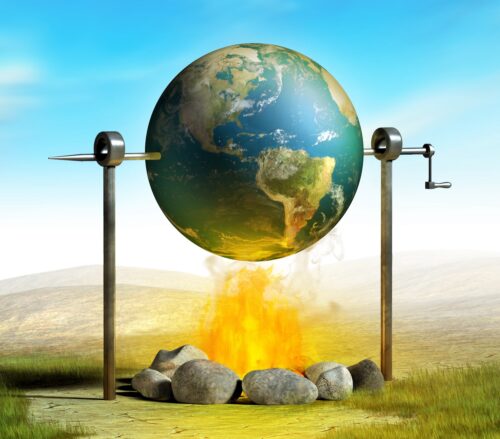

While individual extreme weather events may attract widespread media attention, There are no clear, consistent trends in the data that suggest these events are becoming more frequent or severe globally.
For example, data on droughts, floods, wildfires and other disaster types show no significant increases since 1998.
If anything, the data suggests that natural changes play a more important role in determining the occurrence and intensity of these events than human factors such as carbon dioxide emissions.
Irrational Fear is written by climatologist Dr. Matthew Wielicki and is supported by readers. If you value what you read here, please consider subscribing and supporting the work.
Read A Break from Irrational Fear
